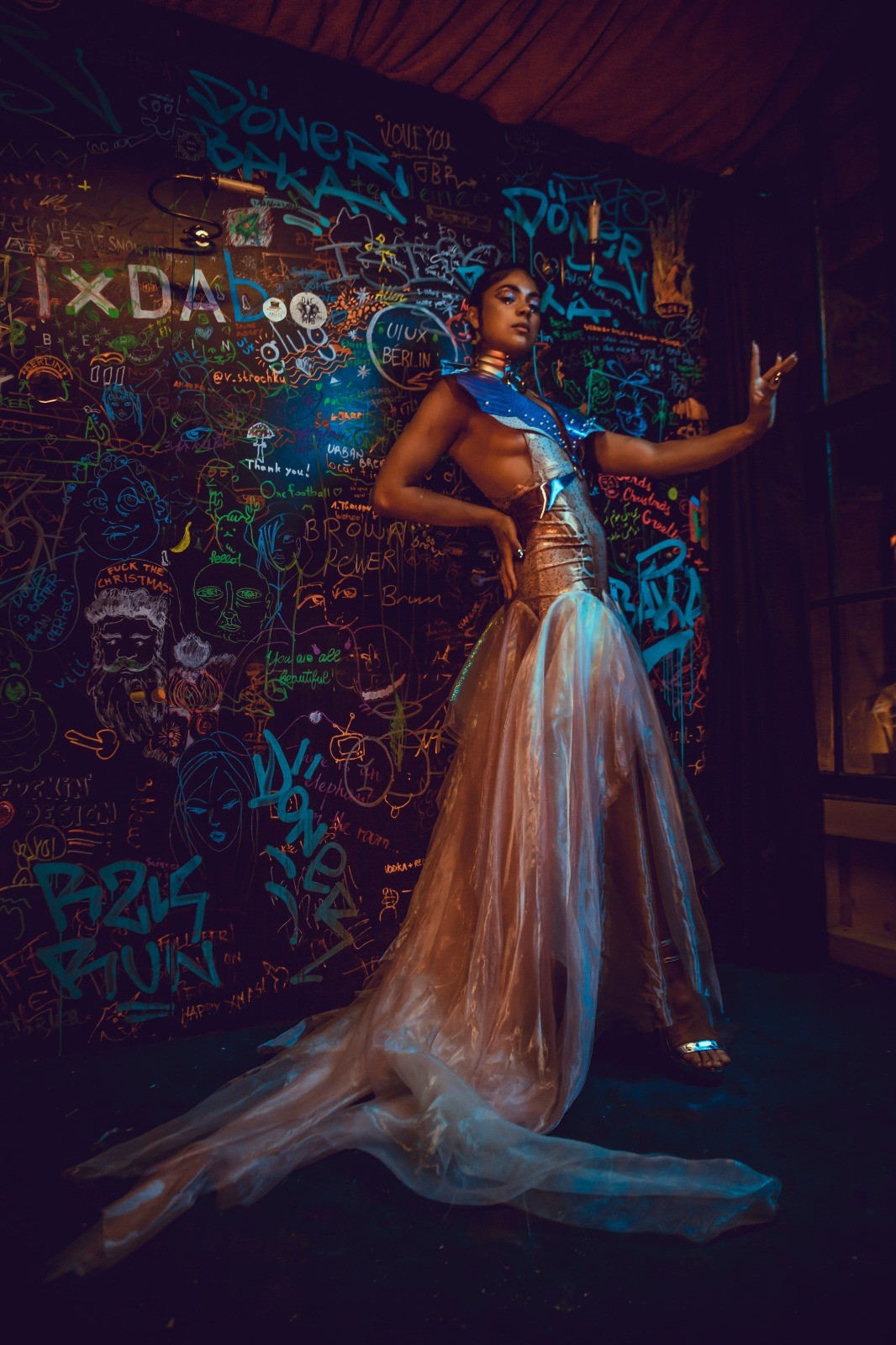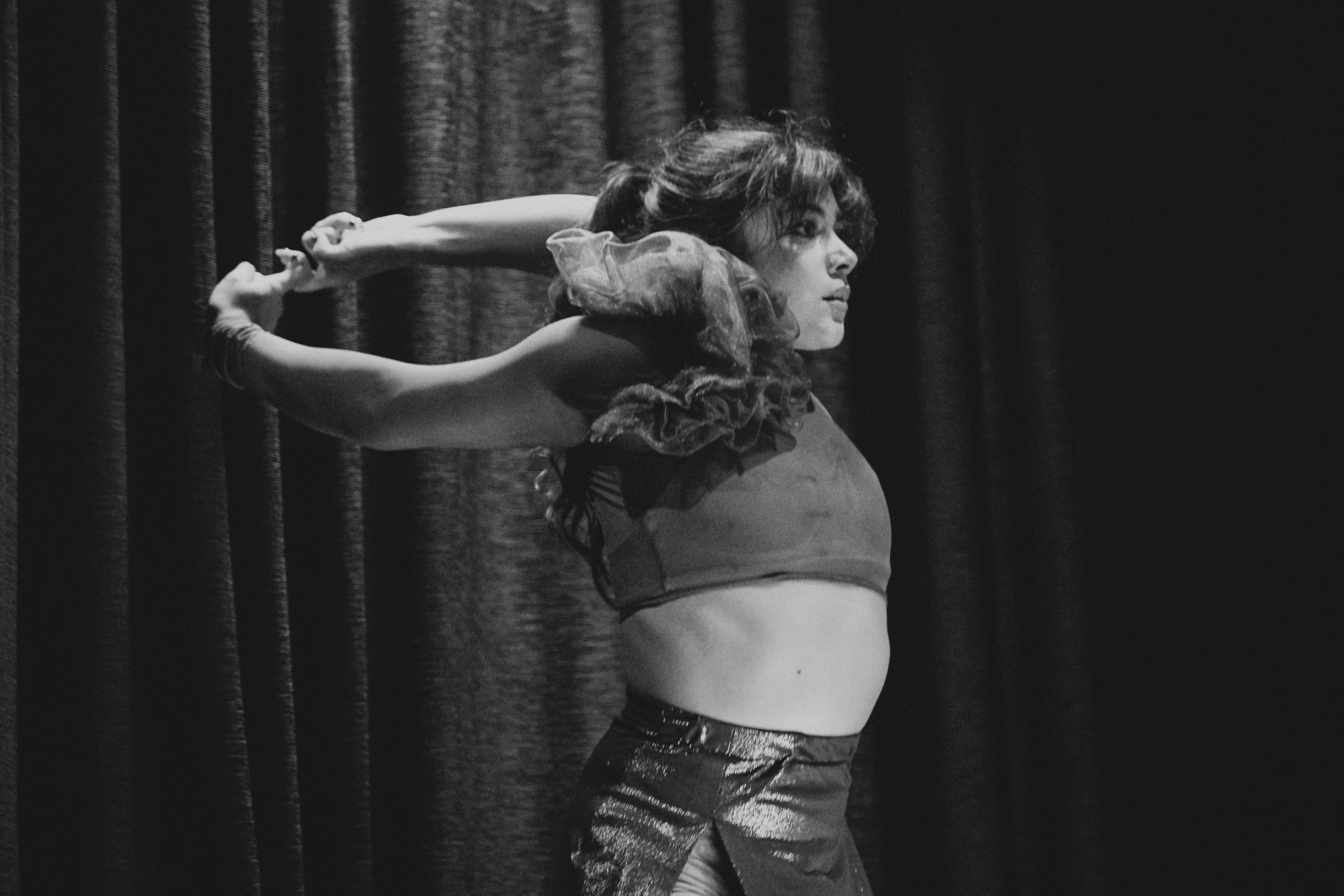Style, Precision and Grace
Insights into Voguing and Ballroom with Anna Shvedkova
Anna first heard about the dance style ‘Voguing’ in 2016 during her last year at the Berlin State School. The Contemporary dance teacher at that time, Kelvin O. Hardy, choreographed her graduate act on the dance trapeze. He showed her ‘catwalks’, one of the five elements in the category ‘vogue femme’, because he felt the movements suited her performance style. “At the time I thought it was just a dance move, but it’s so much more. I didn’t have much exposure to voguing for a while after that, and certainly not to the ballroom scene.”
While on tour in the spring and summer of 2018, Anna is asked by one of her castmates why she no longer dances, like she did at the beginning of her journey as a performer. She admits to having sidelined this very important part of her life, for years, in order to fully concentrate on acrobatics. “Only then did I realize what I had been missing all those years. I didn’t have a good answer to the question, except that I had once heard of ‘voguing’ but didn’t know where or how to make a start.”
He then gives her the name of Anna’s current House Mother – Georgina Philp (Leo ex. Melody, now St. Laurent) and encourages her to attend their voguing classes when she returns to Berlin. Georgina is the pioneer of the German Ballroom scene, having brought voguing to Germany in 2011/2012 after becoming with the scene in New York City.
Once back in Berlin, Anna attended voguing classes at the former House of Melody and immediately fell in love with the dance, the people, and the music. She was touched and fascinated by the history and political power of the subculture. The term “House” in this context does not mean a building, place or similar. In the ballroom scene, a house is a form of dance crew, sports team, or chosen family. The House Of Melody, i.e. individual members, taught at motion*s Dance Studio in Berlin at the time.
“It was like I finally found a space where I could show a side of myself that I had always tried to hide or minimize, and space where I would even be celebrated and supported for it. Sharing time, space, art, love, and other areas of my life with other People of Color had been missing from my life for a long time. I found an entirely different level of acceptance, because people often had, and still have, similar struggles. I would like to clarify here that as a cis, straight-read woman, I am very privileged compared to other bods.” Anna has been regularly participating in voguing classes and sessions since August 2018 and has been a member of what was then House Of Melody, now House Of Saint Laurent, since mid-November 2018.

The first form of voguing is the so-called “Old Way” (original Pop, Dip & Spin) in which includes, in addition to posing, many moves from breakdance, popping, tutting and martial arts. It is often performed to music like funk, disco and house. The dance style originated (like all other categories) from “posing”.
Before the dance itself, battles begin with posing. Positions and postures then change more and more quickly and the transitions become more fluid. Old Way is characterized by lines, symmetry, and precision. Over the years, other voguing styles have developed from the Old Way: New Way and Vogue Fem. It is important to note that “posing” and “Old Way” are two different categories. For example, “Old Way” battles do not involve posing at the beginning. This style originated from “posing”.
New Way is a style of voguing with characteristically complex, abstract and geometric movements. Boxes, lines, illusions are created with the whole body. It’s performed to 90s house music.
Vogue Fem is a style originally created by DragQueens and FemQueens (ballroom term for trans women) and later adopted by cis women and butch queens (gay cis men). Vogue Fem aims for a hyper-feminine energy and presentation of one’s body. The five elements – catwalks, hand performance, spin & dip, duckwalks and floor performance – typify this style.
The most important thing to Anna is to develop her own style in her categories New Way and Sex Siren. Her performance in the piece “in_between” features elements of New Way and Vogue Femme.
Style, precision and grace are essential for Anna. “It is a timeless mantra that no voguer should ever forget. Of course, musicality, creativity, innovation, details, personality, attitude, a story, surprising elements, fashion, and elegance are also important to me. But above all, the performer should never be a copy of someone, but be free to present herself.”

In Anna’s eyes, voguing is more than just a dance style. “The ballroom scene was created and brought into being by and for oppressed queer BIPoC bodies, especially trans women, the so-called “mothers” of the scene. It’s not a public domain and straight white cis people need to be aware that while they are welcome as guests, the ballroom space must always be reserved for the people who need that safe space most.”
The attention ballroom culture has increasingly gained from the media and pop culture is not always advantageous. Events like voguing balls are becoming less safe, commercialization threatens to exploit artists, and the political statement threatens to lose ground in favor of aesthetics. Which is why it’s so important for voguing dance classes to focus first and foremost on the history of the movement.
Anna ‘s advice is to go to sessions and voguing balls, first as a spectator, later as a participant. “Of course, going to clubs and freestyling is also part of it. Documentaries and series like ‘Paris is burning’ and ‘POSE’ lead to a better understanding of the history and the scene. It all takes time. Developing self-confidence and your own style certainly doesn’t happen overnight and, as with any new skill, consistency is key.”
Anna says: “Don’t wait too long to walk your first ball. It’s the best and most effective way to learn. It can all seem very intimidating at first, but the battle situation and being “judged” is a very important part of voguing that you can’t and more importantly shouldn’t avoid. You can learn a lot and grow from it as long as you’re open to it and confront your own insecurities and fears.”
When asked if she has any expectations or requests of her audience about what they might see in her artistic performance, Anna replies, “I try to approach things with as few expectations as possible. It’s no different with my voguing performance. Even if I vogue for just two minutes, I always notice a pattern in the energy of the auditorium and can slowly gauge how the audience will react. At the beginning, people usually can’t quite place my movements because they have never heard or seen anything about voguing. It’s also the only dance sequence in a circus show. There’s an abrupt cut in the show and the audience’s expectations are subverted. At the end of my performance the feeling of ‘I have no idea what that was, but I like it’ lingers in the air. I like that and enjoy it a lot.”

Anna says of herself that she likes to play with this dynamic in her private life as well as in her job. “I enjoy breaking certain expectations and getting people to think outside of the box. Often we get in our own way and limit our lives, through limited thinking, and don’t even get to realize our full potential. I don’t get up and give lectures on ballroom, I dance for a few minutes. I make absolutely no claim that the audience will want to learn the whole history of ballroom straight away afterwards. I just hope that they will be inspired to be more themselves and celebrate themselves for it. Maybe also to become freer in their minds and not worry so much about what others might think about them. It’s liberating. I highly recommend it.”
Anna is part of the Finnish company Circo Aereo and her voguing performance can be seen at the Chamäleon until July 30, 2023. Find out more here. It’s worth a visit!
Text: Fine Herzog
Photos: Victor Hensel-Coe, Carolin Windel, Andy Phillipson

